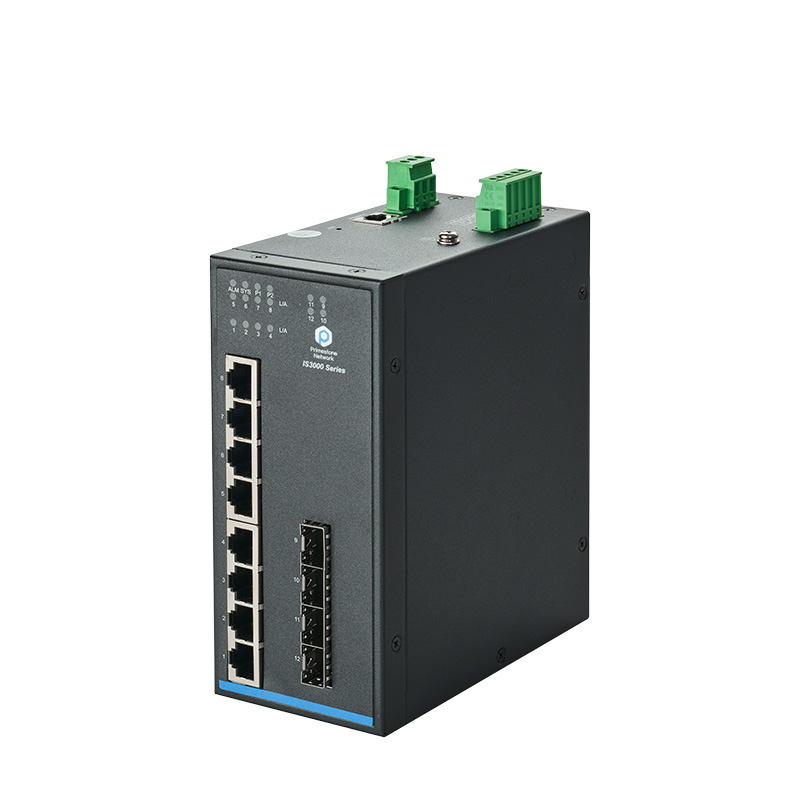The managed Industrial Switch can monitor the network operation status in real time, monitor the network health status, quickly detect and accurately locate faults, and provide good end-to-end business operation management and maintenance capabilities. The managed industrial switch is applicable to the SNMP protocol, which is composed of a set of simple network communication standards. It can complete all the most basic daily tasks of network security management. It has little demand for Internet resources and has some security policies. The working mechanism of SNMP protocol is relatively simple, mainly through some different types of information, namely PDU (protocol data unit) to complete the exchange of network data. The specific functions of the managed industrial switch are mainly shown in:
1. Fault management: when the network fails, it can detect network obstacles, diagnose defects, accurately locate faults, timely notify the network management system personnel and take appropriate measures for the fault
2. Automatic discovery and configuration management: The management and maintenance functions are simple and easy to configure, and can be applied directly and widely, even on large networks
3. Performance management: It can measure the effectiveness and network performance of an end-to-end Ethernet link, such as packet loss rate, delay, jitter, etc

In short, the managed industrial switch allows users to log in to the switch and adjust the setting parameters, so as to manage, configure and monitor the network in a variety of ways. They can also provide better control over how data is transmitted and who can access it. Managed industrial switches usually provide SNMP protocol (Simple Network Management Protocol), enabling users to enable monitoring of the status of the switch and each port, as well as providing traffic throughput, network error information, port status and other statistical information.
Although the managed industrial switch has many advantages in the application process, it requires that all indicators of the managed industrial switch are normal and up to standard, and meet the relevant quality requirements. Then, three indicators are particularly important. Let's have a look!
1. Backplane bandwidth: It depends on the upper limit of the connection bandwidth between each interface template and the switching engine. The backplane bandwidth is the maximum amount of information that can be handled between the switch interface processor or interface card and the data bus. The backplane bandwidth indicates the total data transmission capacity of the switch. The unit is Gbps, which is also called switching bandwidth. The backplane bandwidth of an ordinary switch varies from several Gbps to hundreds of Gbps. The higher the backplane bandwidth of a switch, the higher the ability to process data, but at the same time, the higher the design cost.
Due to the different architectures of modular switches, backplane bandwidth cannot fully and effectively represent the true performance of the switch. The concept of backplane bandwidth does not exist in fixed-port switches, and the backplane capacity and switching capacity of fixed-port switches are equal.
2. Switching capacity: It is the core indicator, and it is the amount of data that can be handled between the switch interface processor or interface card and the data bus.
3. Packet forwarding rate: refers to the capacity of the switch to forward packets.
The three are interrelated. If the backplane bandwidth is high, the switching capacity is large and the packet forwarding rate is high.
Contact: sales
Phone: 18688787693
E-mail: sales@hsindustrialswitch.com
Add: Room 608, Building B,GaoXinQi TEC Park,Baoan District, ShenZhen,China